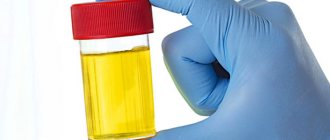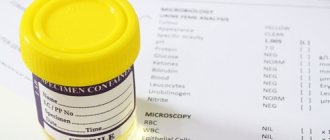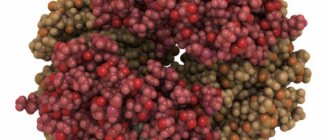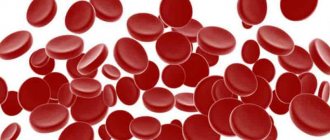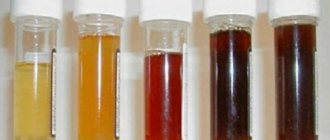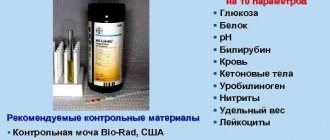When is a drug test necessary?
There are situations in life when it is necessary to undergo drug tests. At this point, people who “dabble” with psychoactive drugs begin to wonder: is it possible to cheat the test? Before answering it, we suggest talking about when tests are carried out, what types of tests for surfactants exist and what they show.
By the way, according to the law of the Russian Federation, you can refuse to take a drug test, but the consequences of this refusal will most likely be disastrous. Also, in some cases, such research is carried out forcibly. There is a standard test that conscripts, convicts, or representatives of certain professions associated with special responsibility undergo. In general, we can say that drug tests are necessary to clarify a number of legal, medical, and everyday issues, and are also used to determine professional suitability.
We list a number of situations when a drug test is necessary:
- Accident testing. Traffic police officers need to determine whether drivers are under the influence of drugs, for which, as a rule, a quick urine test is used.
- Similar studies may be conducted during trials. Here, laboratory tests for drugs in the body are used, which are the most reliable; they show the fact of use, the degree of intoxication, and the regularity of using surfactants. Drug intoxication can become an aggravating circumstance in a case, so the court must have such information.
- During employment. In Russia, this practice is still less widespread than abroad, but many Russian employers already use drug testing during hiring and during medical examinations.
- To provide medical assistance to a drug addict. Drug testing is sometimes needed in critical situations to provide urgent drug treatment. Testing is also used in diagnosing addiction in order to select authentic detoxification measures and draw up the correct treatment regimen for the drug addict.
- At home, if you suspect that a child is using drugs.
Detection time
Many factors influence the length of time a test can detect a particular drug in the body. These factors include
- body mass
- hydration levels
- acidity of urine.
- How long has the person been taking the drug?
If a person uses a drug very frequently or heavily, a urine test will detect it over a longer period of time.
For example, the time it takes for marijuana to be detected may depend on how often a person uses it:
Frequency of marijuana use Time of detection after use Single use 3 days Moderate use, or 4 times a week 5-7 days Daily use 10-15 days Heavy use more than 30 days
This table shows how long a urine test can detect certain drugs after a person has taken them:
Drug detection time after drinking alcohol 7-12 hours Short-acting barbiturates 24 hours Amphetamines 48 hours Heroin 48 hours Morphine 48-72 hours Cocaine 2-4 days Methadone 3 days Short-acting benzodiazepines 3 days PCP 8 days Long-term barbiturates 3 weeks Long-term benzodiazepines 30 days
What affects the rate at which drugs are eliminated from the body?
As we noted at the beginning of the article, drugs are included in the metabolic processes of the body. They all behave differently, and the period of time the drug remains in the body can vary significantly for different substances. They have only one thing in common: all surfactant metabolites are toxic poisons. The entire time they are in the body, these substances circulate in the bloodstream, accumulate in the tissues of internal organs and gradually destroy them.
There are a number of factors that affect how quickly drugs are eliminated from the body, and therefore how much they will be detected by a drug test.
- Human weight. Drugs take longer to be eliminated from the body in obese people. Fat-soluble compounds are stored especially long in the fatty tissues of the human body. This is why it is so difficult to get rid of traces of cannabinoids in the blood and urine.
- Drug dosage: the more a substance enters the body, the longer it stays in it.
- Experience of addiction of a drug addict. With each dose, the addict’s internal organs become unusable, including the body’s natural “filters” - the liver and kidneys. More and more toxins are retained in the blood and urine.
- Health status. To this point, in addition to what was written in the previous one, you can add a drinking and nutrition regimen. If a person drinks enough fluids and eats a lot of fresh vegetables and fruits, then natural detoxification occurs faster.
- Type of drug: different surfactants are eliminated from the body at different rates.
- Physiological characteristics of a person. Metabolic processes occur differently in all people, and they affect the time of elimination of toxins.
Duration of drug content in urine by type
Urine or urine - as a product of the body's excretory system, removes toxins and breakdown products of harmful substances from it. Drugs can be detected by laboratory analyzes and tests within 2-5 days after consuming the dose. The duration of withdrawal from the body depends on the type of substance consumed and is presented in Table 1:
| Drug name (slang name) | Release form | Mode of application | Time spent in urine, days | |
| First appointment | Constant reception | |||
| Codeine (koda, head, Katya) | Pills Suspension Powder | Orally (mixed with catalyst drinks) | 1-2 | 2-3 |
| Barbiturates (barbitulka) | Pills Mixture for injection By duration: Quick Average Long lasting | Orally Intravenously | 2-7 | 7-14 |
| Amphetamines (brew, speed, glass, ice, screw, fireworks, speed) | White or yellow powder | Nasally Intravenously after heating with water Orally | 7-9 | up to 180 |
| Ecstasy (adam, ecstasy, molly) | Capsules Colored tablets with drawings Suspension Powder | Orally (pure or with alcohol and cannabis) Nasal powder | 1-3 | 5-7 |
| Cocaine (blown, cake, flour, kicker, coke, snow, crack, raw, nose) | Powder (coca paste) Cocaine salt Crystal salt (crack) Speedball (a mixture of heroin and cocaine) | Intravenously Nasally Smoking | 2-3 | up to 20 |
| Mephedrone (bath salt, bath, whistle, byrik, gunpowder, hair dryer, bearded, legal, motivator) | White or yellowish powder Capsules Pills | Intravenously Nasally Orally | 5-8 | up to 45 |
| Heroin (white, dope, gera, Gerasim, dad, Gertrude, oblique, cartoon, ech, gunpowder, chock, buckwheat, girik, elephant, sultan, opiates) | Crystal brown powder (diamorphine) White powder (diamorphine hydrochloride) Black resin | Smoking Intravenously Chewing resin | 2-3 | 10-14 |
| Desomorphine (crocodile, one year old) | Suspension | Intravenously | 5-7 | up to 180 |
| LSD (Acid, dance, brand) | Suspension Stamps with drawings Colored tablets Capsules | Impregnate absorbed paper Orally | 2-4 | 5-7 |
| Hemp (marusya, anasha, margot, grass, cones, shmal, boshki, drach, dope, clover, hash, pulka, kafour, mastyrka, rosin) | Herbal Blend (Marijuana) Pollen Resin (Hashish) Hashish oil | Smoking Steaming into decoctions Orally Chewing resin | 4-8 | up to 60 |
| Spice (nonsense, Mamba, mix, Riga, grass, greens) | A mixture of ingredients with three types of herbs: Diamond Silver Gold | Smoking Inhale the fumes after the brew Brew decoctions | 3-5 | up to 45 |
| Ephedrine (Fedya, Jeff, mulka, bodyaga, chicken, crystal, talker) | Capsules Crystalline powder Tea infuser | Intravenously Inhale the vapors after heating Decoction of leaves | 2 | 7-14 |
Table 1 - Characteristics of the main narcotic drugs and the duration of determination of the substance by urine tests.
LSD and ecstasy are psychotropic substances, sought after by consumers for their quick stimulating effect and short period of action. They do not cause pathological changes in the body, they are easily excreted from the body with urine in 4 days with a single use and continuously in 7 days.
Codeine-based drugs represent a group of anti-inflammatory drugs, but to enhance the effect, drug addicts use them in a mixture with alcohol or highly carbonated drinks. Codeine is released the fastest from the human body with waste products.
Amphetamines and desomorphine differ in the duration of poisoning of the body by toxic decay substances. A period of 6 months will be required for complete cleansing from drugs with systematic use.
The human body will be freed from toxins in 2-3 years after a single use of substances such as cocaine, heroin, ephedrine, and fast-acting barbiturates.
Urine drug test and analysis
Drugs and their breakdown products are contained in urine in large quantities for quite a long time, so urine analysis is indicative and reliable. Urine drug testing is used frequently in a variety of situations. There are two types of urine testing: rapid strip tests, which are also suitable for home use; they show the result immediately. The second method is a chemical-toxicological analysis of urine, which is carried out in the laboratory and is more informative, but its results will be ready in a few days.
Summary
A urine test can quickly and effectively detect the presence of illegal or prescription drugs in your body.
Doctors, sports officials, and employers may request urine drug testing for a variety of reasons.
These screenings test for a number of drugs, including marijuana, nicotine, barbiturates, and opioids such as heroin and methadone. Some drugs remain traceable in the body longer than others.
If the initial result is positive, the person may need to take a second test to confirm.
Rapid urine drug test
Today, everyone has access to rapid urine drug tests in the form of indicator strips. They are sold in pharmacies and can be used at home, for example, if you want to understand whether your son or daughter is taking drugs. These tests are very convenient, easy to use, and give fairly reliable results within a few minutes. Therefore, they are used by traffic police officers and doctors during examinations and in emergencies. Drug test strips can be used to detect one type of drug or to detect several types at once.
The advantage of this analysis is the speed of obtaining the result, but the disadvantage is that the test does not determine the dosage and degree of intoxication. Such analysis is not accepted as evidence in court. Specialized drug treatment clinics use rapid tests and tapes to detect drugs in urine to determine what type of stimulants the patient is using.
A quick test can detect heroin, cocaine, morphine, methadone, methamphetamine, amphetamine, barbiturates, ecstasy, marijuana, and antidepressants in urine.
How to prepare for a urine test
The test does not require any special preparation. Usually the person simply urinates in a plastic container.
It is important to note that some medications and supplements may produce false positive results indicating illicit drug use.
The person must tell the testing provider whether they are being tested:
- prescription drugs
- over-the-counter drugs
- herbal remedies
- applications
The urine screening will be performed by a healthcare professional or technician. They can start by asking someone about it:
- empty your pockets
- remove excess clothing and items such as bags and coats.
- Clean your hands with antibacterial gel or soap and soap and water.
- Clean your genital area with a wipe that the technician will provide.
The technician will then instruct the person to:
- urinate into a container until the urine level reaches a certain point.
- Replace the lid on the container and return it to the technician.
The technician then takes the temperature of the urine to make sure it is suitable for testing. The sample is then sealed in a plastic bag.
Both the donor and the technician must monitor the sample before it is sealed to ensure that no one has tampered with it.
Sometimes a technician will accompany the person to the testing laboratory to ensure that the sample is submitted correctly. The technician must explain the reason for such monitoring.
Chemical-toxicological analysis of urine
Chemical-toxicological urine analysis is a laboratory test that determines foreign substances in urine: drugs, toxins, potent drugs, alcohol. This is a fairly serious analysis that shows not only the type and presence of the drug in the urine, but also its density. Based on the results of such a test, you can determine the degree of drug intoxication, the presence of addiction, that is, how regularly the drug is used. Data from such urine analysis are taken into account by law enforcement and judicial authorities as evidence.
Chemical-toxicological analysis of urine reveals cocaine, amphetamines, cannabinoids, alcohol, heroin, morphine and some other drugs.
Types of analyzes
As a rule, a urine test for narcotic substances allows you to determine whether you have taken these substances in the last 3-5 days. Some drugs, such as marijuana, which was mentioned above, can be detected even after a single use of up to one month.
Reference! Knowledge of this fact is important in situations such as challenging the act of medical examination of a person driving a vehicle for intoxication.
Indeed, often the doctor performing this procedure indicates the detected fact of intoxication only on the basis of cannabinoids (hemp) detected in the urine. In this case, there are no clinical signs of intoxication. Such circumstances make it possible to challenge the act when considering it in court, if we are talking about an administrative violation.
A urine drug addiction test can be performed using several methods, which, in turn, differ not only in cost, but also in the algorithm of implementation. Each specific laboratory can carry out only some types of such tests, but most private clinics in Moscow and large cities provide a full range of such services.
Immunochromatographic method
This test is the most popular because it can be used to detect 14 types of drugs in urine, such as marijuana, methadone, opiates (morphine, heroin), amphetamine, methamphetamine, cocaine, ecstasy, ketamine, benzodiazepines, barbiturates, buprenorphine, oxycodone, propoxyphene, phencyclidine.
Of course, such an analysis is not cheap, about 2800-3000 rubles, but you can take it and get an answer in one day. Urine analysis for drug addiction using the immunochromatographic method is a highly sensitive and reliable method of examination.
Chemical-toxicological method
If the fact of taking narcotic drugs is confirmed during a urine test, an additional study of the taken biomaterial is often carried out using a chemical-toxicological method. Thanks to it, you can get answers to two questions at once: firstly, the study confirms the fact of drug use, and secondly, it allows you to determine the specific type of drug taken.
For example, if an immunochromatographic analysis revealed the presence of opiates in the urine, then a chemical-toxicological analysis can clearly indicate what kind of opiate it was: heroin, methadone, morphine, codeine or another. A urine test using this method is also a very expensive test, and in Russian laboratories it costs about 4,000 rubles. The results are ready within 3-7 days.
Chemical-toxicological methods for testing urine for drugs also include:
- PFIA (polarization fluorescence immunoassay) for one of the following groups - cannabinoids, cocaine, opiates, methadone, amphetamines, barbiturates, benzodiazepines, phencyclidine.
- ELISA (enzyme-linked immunosorbent assay) of psychotropic and narcotic drugs in the isolated biomaterial for the group of psychoactive and narcotic substances (opiates and others).
- Gas-liquid chromatography - examination of urine for alcohol.
Quantitative Analysis
In some situations, there is a need not only to identify the presence of a drug in the urine, but also to determine its concentration, that is, a quantitative indicator. This parameter is measured in ng/ml. Assessing the quantitative indicator in the fluid secreted by the kidneys is of practical importance if it is necessary to determine the degree of tolerance (tolerance) to a drug in a particular person.
Causes of poor urine analysis
The higher the tolerance, the greater the dependence, as a rule. Determining the concentration of a substance in urine is also relevant when developing therapeutic measures, such as detoxification and/or ultra-rapid opiate detoxification.
This information will help you select an adequate medication load to achieve remission and further rehabilitation. A quantitative urine test for drug addiction is carried out using the gas chromatography-mass spectrometric method and costs around 4,700-5,000 rubles.
Urine drug testing can be done on an anonymous basis. In any private laboratory, the customer can submit an application for services under a fictitious name, without indicating his personal name.
And, conversely, if it is necessary to record a legally significant fact, you should come to the laboratory with a passport or other identification document. In such cases, the subject will give urine under conditions that exclude falsification (substitution), that is, under the supervision of a medical professional.
Is it possible to cheat a urine drug test?
It remains for us to consider the most pressing issue for those who are worried about such testing. Yes, there are several ways that can greatly reduce the likelihood of detecting drugs in your urine. Of course, none of them are 100% guaranteed, but in general, they work and help you cheat a urine drug test. They are based on two principles: enhanced detoxification of the body and masking traces of drugs as natural metabolic products in the urine. Let's take a closer look at them.
Method number 1. Detoxification with home remedies
If you find out that you are going to have a urine drug test, stop using them immediately; if possible, try to reschedule the test date for as long as possible. Next, start eliminating toxins using available home remedies:
- Increased drinking regimen. If in a normal case a person is recommended to drink about two liters of water a day, then in your case it can be up to three and a half. For this, only ordinary clean drinking water or mineral water without gases is suitable.
- Start active sports, anything that makes you sweat will do.
- Visit the steam bath 2-3 times a week.
- Follow a diet: you need to give up sweet and fatty foods, coffee. Eat more vegetables and fruits.
Method number 2. Medical detoxification
You don’t have to split hairs and go to a private narcology clinic, where they can give you several cleansing drips without any questions asked. Many clinics have a day hospital, so you can really effectively cleanse your body without going to the hospital. In addition, now almost every clinic offers home detoxification services. A narcologist will come to you at a convenient time and cleanse your body of the drug. Treatment in private drug treatment clinics is carried out anonymously.
Method number 3. Concealing drug traces
For those who like extreme solutions, experienced drug addicts describe several quick methods for masking traces of drugs in urine. One option is to drink plenty of fluids and a few Furosemide tablets shortly before your drug test. Second option: add a little citric acid or soda to the test tube with urine, which you need to stock up on in advance.
Method number 4. Synthetic urine
Now you can buy special artificial urine, it is an analogue of pure human urine. Synthetic urine does not deteriorate for one year; it can be stored at temperatures from 0⁰С to +40⁰С.
Method No. 5. Application of antitests
These are drugs that temporarily block test results by having the ability to hide drug metabolites in the urine. Such antitests can be purchased in online stores. These are Unitox, Clearex, FAZETOX mineral. Antitests work for up to 5-6 hours.
Method number 6. Taking vitamins
Shortly before testing, vitamins B are taken, for example B2 and B12, 50-100 mg. Then every 15 minutes, drink 200 milliliters of water, more than a liter. During the test, you put the first portion of urine into the toilet, the rest into a test tube.
Types of substances and timing of their removal from the body
Each person's body works according to an individual regime. Therefore, it is impossible to say exactly when the substances will completely leave the human body. The duration of withdrawal of substances directly depends on the frequency of their use and type. But, despite such factors, there is still an average time for the release of narcotic substances from the body.
- Opiates. They are classified as dangerous substances that cause strong physical and psychological dependence almost from the first time of use. These include morphine and heroin. Methadone also falls into this category of substances. On average, these substances leave the body within 72 hours. If a person often uses these types of substances, then the duration of withdrawal may increase to 8 days;
- A group of narcotic substances based on cannabis. At the moment, all substances consisting of hemp are especially popular around the world. The duration of their removal from the body also directly depends on the frequency of use. The minimum period is 4 days, but sometimes such substances are completely able to leave the body only after 21 days;
- Amphetamine and methamphetamine group. Both types are strong psychostimulants that cause psychological and physical dependence. All traces of them disappear from the body after 2 days;
- Cocaine. One of the expensive substances that has a psychostimulating effect on the body. It causes rapid addiction; substances indicating this type of drug leave the body within 10 days;
- Hallucinogens. They negatively affect the human psyche and contribute to its destruction. Such substances can be completely removed from the body within 2 hours, but depending on the types of drugs or mushrooms, the duration of withdrawal can increase to 2 weeks.
Afterword
First of all, I would like to note that it is better to use the powers of the mind and creative thinking to fight drug addiction, and not to cheat tests. The most effective way in this situation is to use the method of drug detoxification in a drug treatment clinic or at home. This way you will completely cleanse your body of drugs, get rid of physical dependence, and bring your health back to normal. Who knows, maybe you'll enjoy being sober, feel good, and decide to go to rehab.
Research methods
There are several popular test methods. The waiting period for the conclusion, as well as the volume of biological fluid required upon delivery, depend on the selected testing option.
HTI
The following types of chemical-toxicological tests are distinguished:
- immunoenzyme;
- polarization fluorescence immunoassay;
- gas-liquid chromatography;
- chromatography-mass spectrometry.
The required volume of liquid is 50 ml, the waiting time for the conclusion is 15 minutes.
Express test
The fastest research option. Urine is placed in a special vessel, the response time is 3 minutes.
- 1 stripe – positive;
- 2 stripes – negative.
Immunochromatographic analysis of urine
Makes it possible to detect antibodies to chemical compounds. This method allows you to determine the fact of drug use even after three to four months.
How to collect urine for research
The biological material is collected in a dry container; the ideal option is a sterile urine collection container, which can be purchased at a pharmacy. The analysis does not require any preliminary preparation. Before donating urine, you do not need to adhere to a food or drinking regime; they will not affect the quality and reliability of the result.
The only precaution would be to dilute the urine. Experienced drug addicts or teenagers whose parents suspect of drug use may try to distort test results by adding water to a container with urine or substituting material from a non-drug addict.
Biological material is collected in a dry and sterile container
To get an accurate result, you need to strictly control the urine collection process. The optimal volume is 100-150 ml. Then seal the container with the biological sample with a lid and deliver it to the laboratory for testing no later than 48 hours after collection. If it is not possible to obtain urine for analysis, it should be stored in a cool place with a temperature of 2-8°C.


